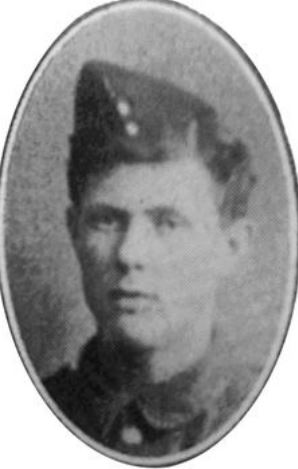2nd Battalion, Gloucestershire Regiment

Albert George Bridges was born on 19 January 1896 at Ascott-under-Wychwood, Oxfordshire. He was the eldest of four children born to Edward William Bridges and his wife Elizabeth.
By the time of the 1911 Census the family had moved to Station Cottage at Gotherington and George (he appears to have been known by his second name) was employed as a mason in the building trade.
According to a report in the Gloucestershire Echo he enlisted in the Army from Cavendish House, Cheltenham at the start of the war. It is not clear if he was an employee of that well-known retail store. He was posted to the 2nd Battalion of the Gloucestershire Regiment. His Medal Rolls Index Card states his rank as Lance Corporal, rising to Corporal, so he may have had some form of military experience prior to the war but in the absence of a service record this cannot be ascertained.
He was sent to France on 12 March 1915, as part of a draft of 113 men, who joined up with the 2nd Glosters at Dickebusch a few days later. It was reported that he received a slight wound during the Battle of Second Ypres the following month.
The 2nd Glosters arrived in Salonika on 12 December 1915. As part of 81 Brigade, 27 Division, they joined an Anglo-French force resisting the Bulgarian advance in Northern Greece.
Little action was seen by the battalion until the end of September 1916. On 30 September it was deployed to the north east of Salonika, along the left bank of the River Struma facing Bulgarian positions in the villages of Karajakoi Bala and Karajakoi Zir. An operation was mounted to clear these villages and the Glosters, along with the 2nd Cameron Highlanders, was assigned to the capture of the former. The attack went in at 5.30am and by 9am the objective had been taken and consolidation was undertaken. During the night of 30 September/1 October the Bulgarians mounted counter-attacks using artillery and heavy rifle fire but were repulsed. The operation had cost the 2nd Glosters fifty five casualties amongst other ranks.
George Bridges was one of these. Reports vary as to whether he was killed in action or died of wounds but it would appear likely that it was the latter, as his date of death is recorded as 1 October 1916 and he came to be buried in Lahana Military Cemetery, which served burials from the Struma sector and in particular No 27 Casualty Clearing Station. His headstone has an unusual inscription Mizpah Gen. 31.49: ‘mizpah’ is Hebrew for ‘watchtower’ and (part of) the reference to a passage from the Book of Genesis reads ‘May the Lord keep watch between you and me when we are away from each other’. He is commemorated on the Gotherington War Memorial.
